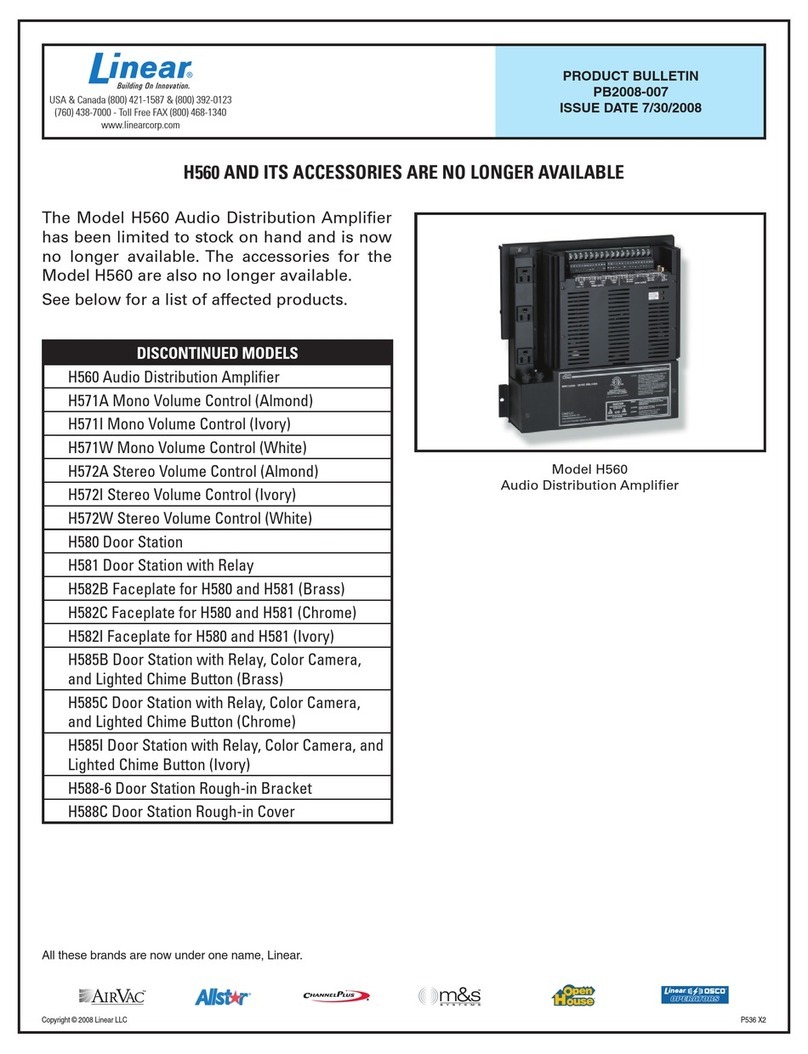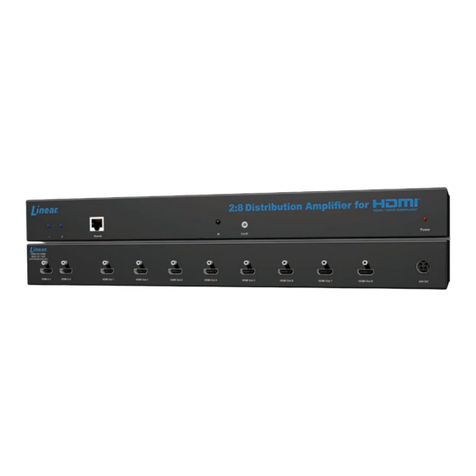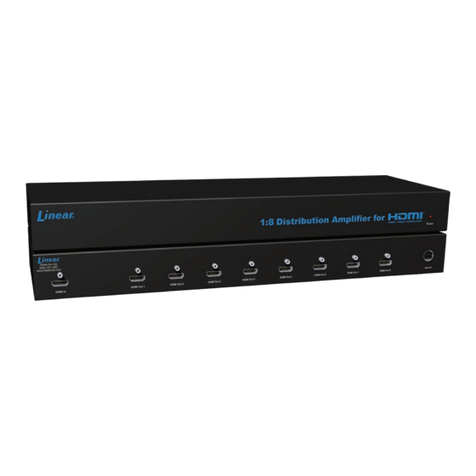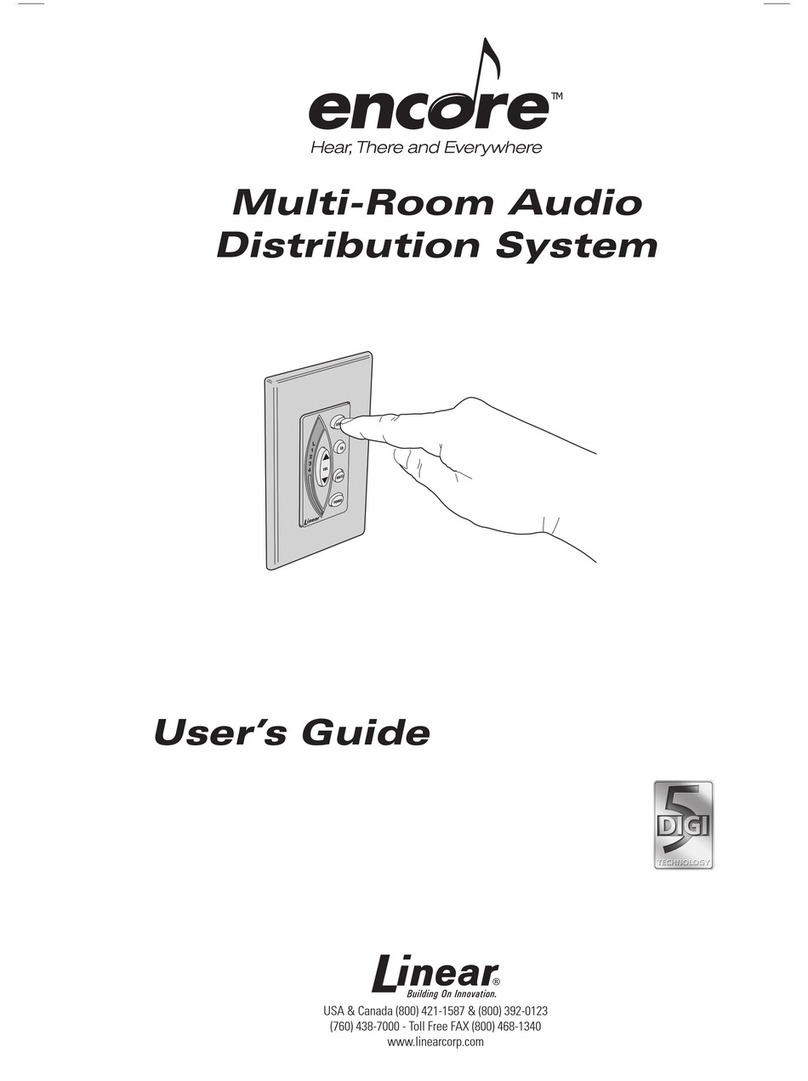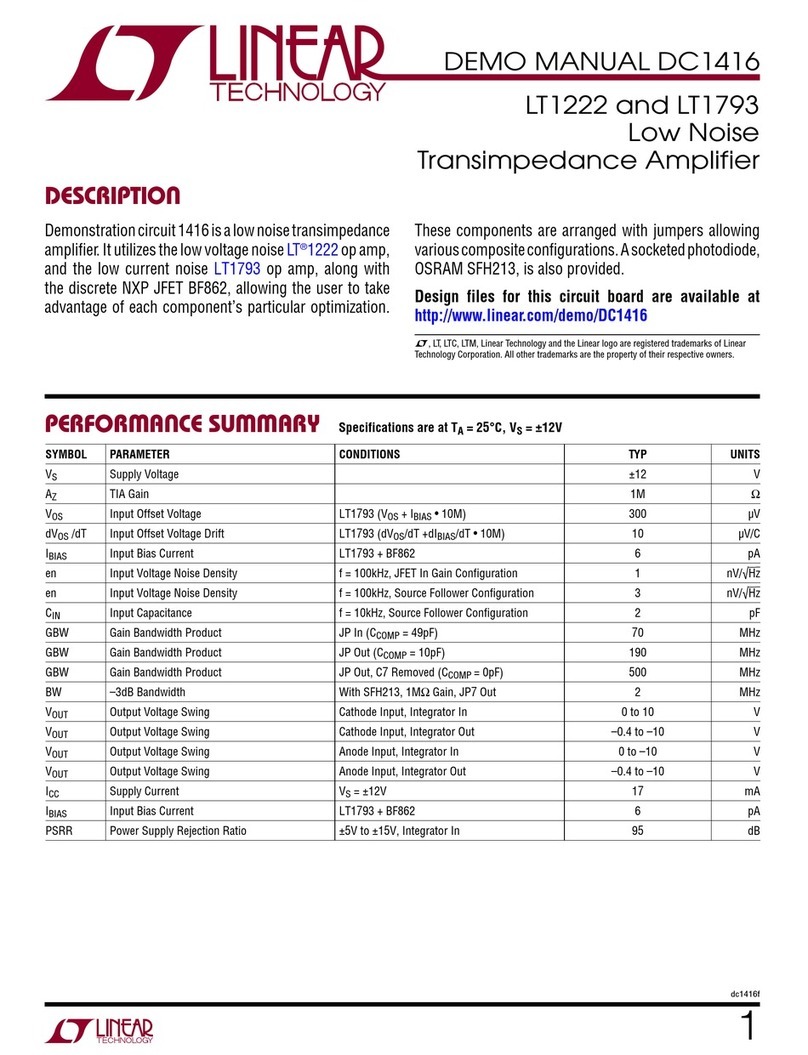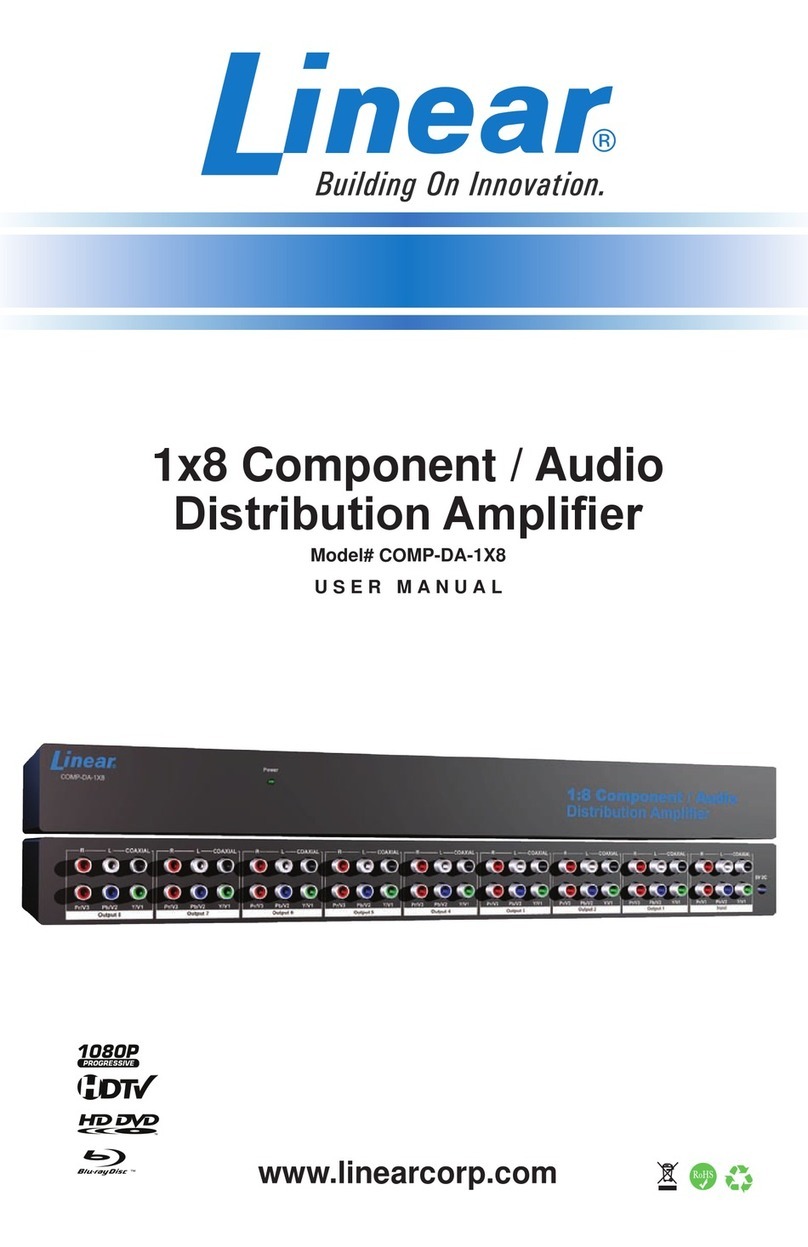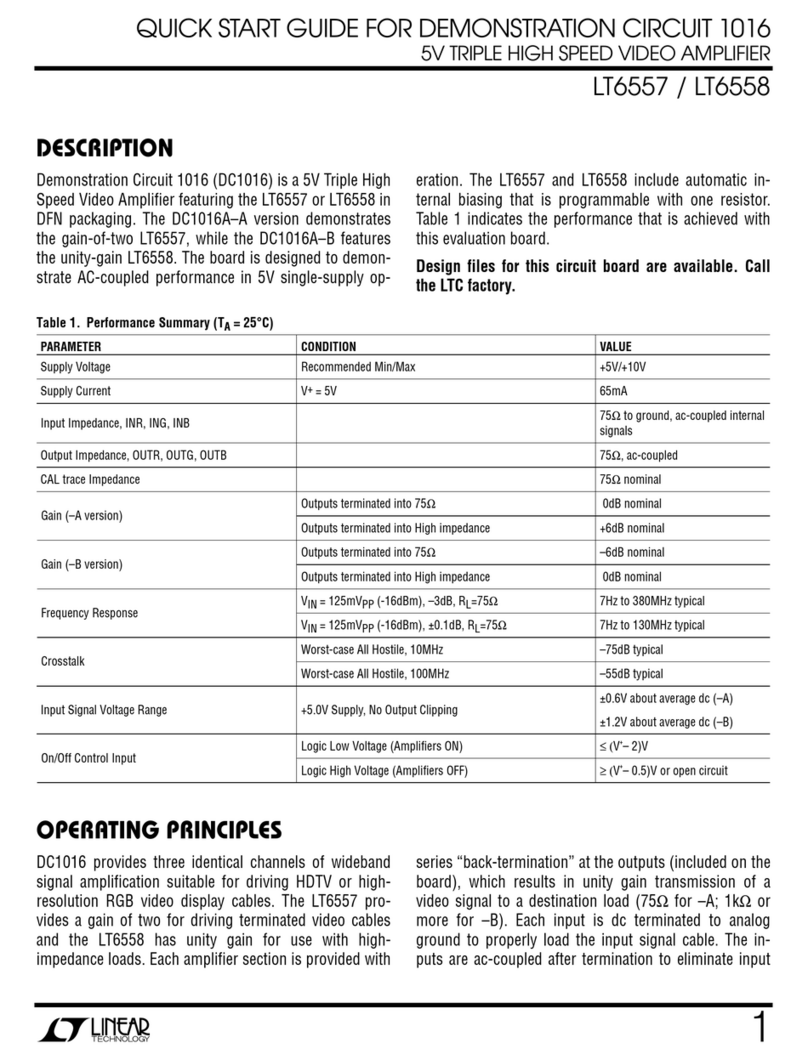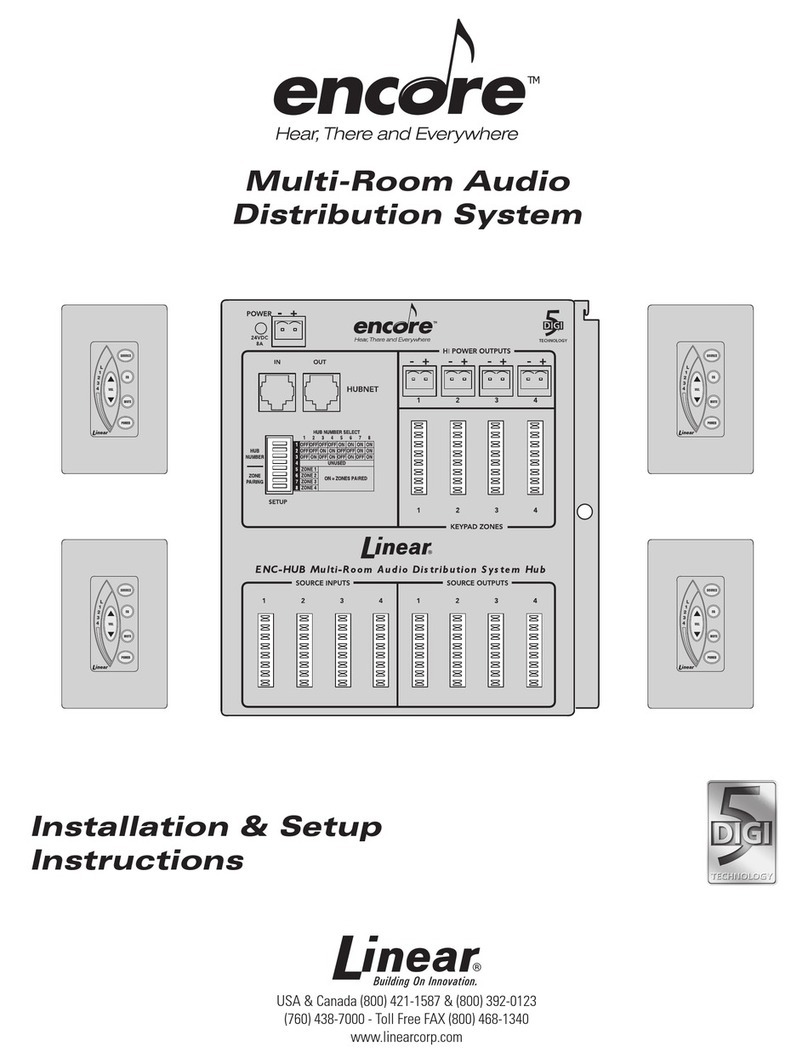
microZOTL Preamplifier User Guide
Linear Tube Audio
6
Tube Complement: The microZOTL Preamplifier utilizes and is shipped with 2
12AT7 input tubes and 2 12SN7 power tubes. There are jumpers on the amplifier
board to allow 6SN7s to be used instead of the 12SN7s (see the following section for
details on configuring the jumpers). Sometimes 12AU7s are used instead of 12AT7s
to lower the gain of the unit.
Power Tube Heater Voltage Jumper Settings: The power tubes (tube sockets
labeled V2 and V3) can be used with either 6 volt 6SN7 tubes or 12 volt 12SN7
tubes. There are two voltages for each tube. One is the high voltage that carries the
audio. The other is the heater voltage. This makes the tube heat up and glow. There
are two jumpers that are set at the factory to match the tubes shipped with the unit.
So, you should never need to ever change these jumpers unless you are changing
from a 12SN7 to a 6SN7 (or the reverse). To set the jumpers for 6 volt operation
(using a 6SN7), there should be only one jumper installed, across 3 and 4. For 12
volt operation, one jumper should be installed across 1 and 3, and a second jumper
should be installed across 2 and 4. If you accidently plug a 12 volt tube into a
microZOTL configured for 6 volts, it won’t hurt it, it just won’t work. If you
accidently plug a 6 volt tube into a 12 volt heater, it will glow very brightly and will
burn out in a few minutes. A brief time at 12 volts usually doesn’t hurt it, except
shorten the life. It is recommended to avoid having the voltage jumpers set wrong. If
you are never changing tubes or do not understand any of this, just ignore this
section of the manual.
Tube Replacement and Tube Rolling: The microZOTL Preamplifier utilizes the
ZOTL technology which operates the tubes at 1/3 the heat than other tube
amplifiers and subsequently the tube life is typically 3 times as long as other
amplifiers. Unused tubes will typically last 10,000 hours of operation.
Note: there are very high voltages in the preamplifier. When removing the
cover ensure the power cord is disconnected. Be extremely careful to ensure
the unit is off for at least 5 minutes to allow voltages to dissipate. Avoid
touching the board, as high voltages may still be present even if the unit is off.
NOS (New old stock) tubes are available and almost always sound better than
Russian or Chinese tubes in current production. However, where these tubes have
been for the last 50 years is never certain, so sometimes they can fail or become
noisy (static or rushing sounds), and require replacement. And of course, one can
develop an affliction known as “tube rolling”. As the amplifier sound will change to
reflect the quality and “tone” of the tubes installed in it, some are often changing
between different brands to optimize the sound to their taste. In extreme cases,
adapter sockets are utilized to use exotic tubes not directly electrically compatible.
The amplifier has a powerful autobias circuitry, which means the amplifier
automatically adjusts to the optimal levels for the tubes and no adjustments are
required (except the jumpers must be correctly set for 12 volt or 6 volt power tubes
– designated by 12SN7 or 6SN7).
